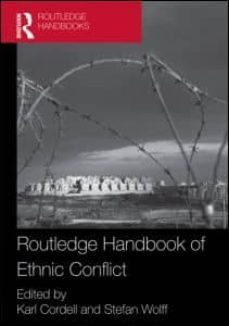Imprescindibles
Más vendidos Libros más leídos eBooks más leídos Todos los libros Todos los libros Autores destacados Series y sagas
Recomendados Libros recomendados Autores destacados Libros que inspiran Vidas con historia LGTBIQ+ English books
Ficción
Literatura Contemporánea Estudios literarios Clásicos Cuentos Poesía Teatro Libros de bolsillo Sagas literarias
Géneros literarios Novela romántica y erótica Novela negra Novela histórica Narrativa fantástica Novela de ciencia ficción Novela de terror Narrativa de humor Narrativa de viajes
No Ficción
Ciencias y tecnología Biología Ciencias Ciencias naturales Divulgación científica Informática Ingeniería Matemáticas Medicina Salud y dietas Formación Idiomas Estilo de vida Libros de Cocina Guías de viaje Narrativa de viajes Deportes Libros de Juegos Manualidades
Humanidades Autoayuda y espiritualidad Ciencias humanas Derecho Economía y Empresa Psicología y Pedagogía Filosofía Sociología Filología Biblioteconomía Estudios filológicos Estudios lingüísticos Estudios literarios Historia y crítica de la Literatura
Infantil
Juvenil
#Jóvenes lectores Narrativa juvenil Clásicos adaptados Libros Wattpad Libros Booktok Libros de influencers Libros de Youtubers Libros Spicy Juveniles Libros LGTBIQ+ Temas sociales Libros ciencia ficción Libros de acción y aventura Cómic y Manga Juvenil Cómic Juvenil Manga Shonen Manga Shojo Autores destacados Jennifer L. Armentrout Eloy Moreno Nerea Llanes Hannah Nicole Maehrer
Libros de fantasía Cozy Fantasy Dark academia Hadas y Fae Romantasy Royal Fantasy Urban Fantasy Vampiros y hombres lobo Otros Misterio y terror Cozy mistery Policiaca Spooky Terror Thriller y suspense Otros
Libros románticos y de amor Dark Romance Clean Romance Cowboy Romance Mafia y amor Romance dramatico Romance dramatico Romcom Sport Romance Otros Clichés Enemies to Lovers Friends to Lovers Hermanastros Slow Burn Fake Dating Triángulo amoroso
Cómic y Manga
Novela gráfica Novela gráfica americana Novela gráfica europea Novela gráfica de otros países Personajes, series y sagas Series y sagas Star Wars Superhéroes Cómics DC Cómics Marvel Cómics otros superhéroes Cómics Valiant
eBooks
Literatura Contemporánea Narrativa fantástica Novela de ciencia ficción Novela de terror Novela histórica Novela negra Novela romántica y erótica Juvenil Más de 13 años Más de 15 años Infantil eBooks infantiles
Humanidades Autoayuda y espiritualidad Ciencias humanas Economía y Empresa Psicología y Pedagogía Filosofía Historia Historia de España Historia Universal Arte Cine Música Historia del arte
Ciencia y tecnología Ciencias naturales Divulgación científica Medicina Salud y dietas Filología Estudios lingüísticos Estudios literarios Historia y crítica de la Literatura Estilo de vida Cocina Guías de viaje Ocio y deportes
KARL CORDELL
Recibe novedades de KARL CORDELL directamente en tu email
Filtros
Del 1 al 3 de 3
ROUTLEDGE 9780415476256
A definitive global survey of the interaction of race, ethnicity, nationalism and politics, this handbook blends theoretically grounded, rigorous analysis with empirical illustrations, to provide a state-of-the art overview of the contemporary debates on one of the most pervasive international security challenges today. The contributors to this volume offer a 360-degree perspective on ethnic conflict: from the theoretical foundations of nationalism and ethnicity, to the causes and consequences of ethnic conflict, and to the various strategies adopted in response to it. Without privileging any specific explanation of why ethnic conflict happens at a specific place and time or why attempts at preventing or settling it might fail or succeed, the Routledge Handbook of Ethnic Conflict enables readers to gain better insights into such defining moments in post-Cold War international history as the disintegrations of the Soviet Union and Yugoslavia and their respective consequences and the genocide in Rwanda, as well as the relative success of conflict settlement efforts in Northern Ireland, Macedonia, and Aceh. By contributing to understanding the varied and multiple causes of ethnic conflicts and to learning from the successes and failures of its prevention and settlement, the Handbook makes a powerful case that ethnic conflicts are neither unavoidable nor unresolvable, but rather that they require careful analysis and thoughtful and measured responses.
Ver más
Tapa dura
ROUTLEDGE 9780415623667
A definitive global survey of the interaction of race, ethnicity, nationalism and politics, this handbook blends theoretically grounded, rigorous analysis with empirical illustrations, to provide a state-of-the art overview of the contemporary debates on one of the most pervasive international security challenges today. The contributors to this volume offer a 360-degree perspective on ethnic conflict: from the theoretical foundations of nationalism and ethnicity, to the causes and consequences of ethnic conflict, and to the various strategies adopted in response to it. Without privileging any specific explanation of why ethnic conflict happens at a specific place and time or why attempts at preventing or settling it might fail or succeed, the Routledge Handbook of Ethnic Conflict enables readers to gain better insights into such defining moments in post-Cold War international history as the disintegrations of the Soviet Union and Yugoslavia and their respective consequences and the genocide in Rwanda, as well as the relative success of conflict settlement efforts in Northern Ireland, Macedonia, and Aceh. By contributing to understanding the varied and multiple causes of ethnic conflicts and to learning from the successes and failures of its prevention and settlement, the Handbook makes a powerful case that ethnic conflicts are neither unavoidable nor unresolvable, but rather that they require careful analysis and thoughtful and measured responses.
Ver más
Tapa blanda
MACMILLAN PUB. LTD. 9780333971246
This volume presents a comprehensive and up-to-date picture of ethnopolitics in Europe. It details the dynamics of the political mobilization of ethnic groups across the continent and its consequences for domestic and international politics. Written by recognized experts in the field and following a clear structure, this is an essential reference work for any student of contemporary Europe, allowing for systematic cross-national and cross-community comparisons. It also serves as a unique data source on the continent''s politically mobilized ethnic groups.The Ethnopolitical Encyclopaedia of Europe is the first work of its kind that systematically and rigorously examines the politics of ethnicity throughout the continent as a whole. Rather than indulge in a tour of Europe designed to unearth as many diverse population groups as possible, the Encyclopaedia is focused and serves as a unique data source on the continent''s politically mobilized ethnic groups. In order to facilitate easy access, the various regions of Europe are assessed and then the nature of the politics of ethnicity is analyzed on a country-by-country basis. The combination of incisive entries, maps, tables and easy-to-use country guides makes this an invaluable reference book for both academics and practitioners.
Ver más
Tapa dura
Del 1 al 3 de 3




























